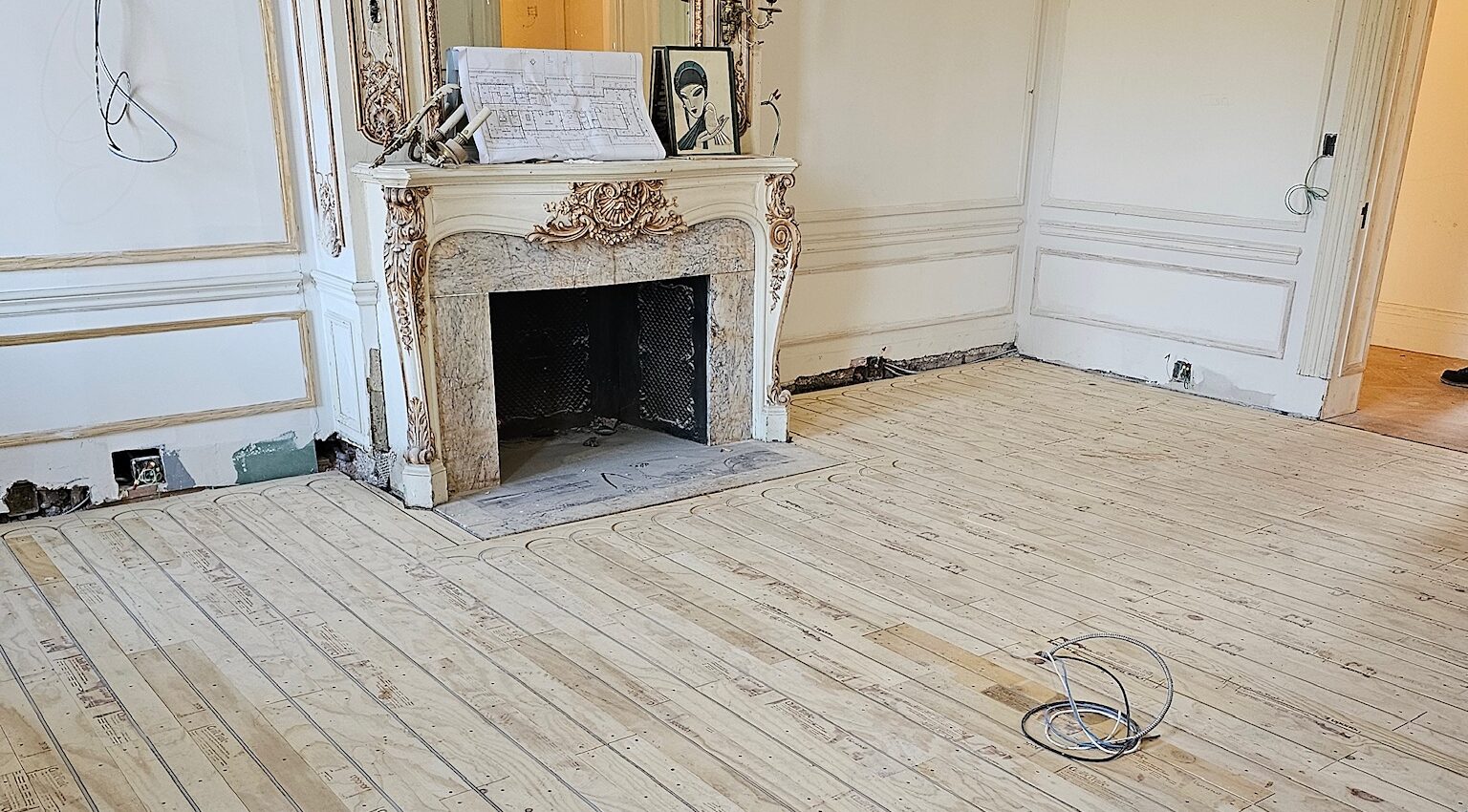
(516)723-9005
86 Forrest Ave, Glen Cove, NY 11542

The Science of Radiant Floor Heating: Warmth from the Ground Up
Imagine stepping onto a warm floor on a chilly morning. No more icy tiles or drafty rooms! This luxurious feeling is the magic of radiant floor heating, a technology that’s been around for centuries but is experiencing a modern resurgence. Let’s delve into the science behind this innovative heating method and explore its benefits and suitability for various homes.
How Radiant Floor Heating Works: The Science Behind the Warmth
Radiant floor heating works on the principle of thermal radiation. Instead of heating the air like traditional forced-air systems, it warms the floor itself, which then radiates heat upwards, warming the room from the ground up. This creates a more even and comfortable heat distribution.
There are two main types of radiant floor heating systems:
- Hydronic Systems: These systems use pipes filled with heated water circulating beneath the floor surface. The water is heated by a boiler or water heater.
- Electric Systems: These systems use electric resistance cables embedded in the floor to generate heat.
Both systems distribute heat evenly across the floor surface. The heat then radiates upwards, warming objects and people in the room directly. This direct heating is more efficient than heating the air, which can often lead to stratification (hot air rising to the ceiling while the floor remains cold).
Benefits of Radiant Floor Heating: Comfort and Efficiency
Radiant floor heating offers a multitude of benefits:
- Enhanced Comfort: The even heat distribution eliminates cold spots and drafts, creating a consistently comfortable environment. It warms the lower part of the body, where we feel cold most acutely.
- Energy Efficiency: Because radiant floor heating directly warms people and objects, it requires lower temperatures than forced-air systems to achieve the same level of comfort. This can translate to significant energy savings. Hydronic systems, in particular, can be very efficient when paired with high-efficiency boilers or heat pumps.
- Improved Air Quality: Forced-air systems can circulate dust, allergens, and other irritants. Radiant floor heating, on the other hand, doesn’t stir up the air, making it a healthier option for allergy sufferers.
- Quiet Operation: Unlike noisy furnaces, radiant floor heating systems operate silently.
- Design Flexibility: Radiant floor heating can be installed under various floor coverings, including tile, stone, wood, and even carpet (with some limitations). This allows for greater design flexibility.
- Space Saving: Radiant floor heating eliminates the need for bulky radiators or vents, freeing up valuable floor and wall space.
Suitability for Different Homes: Is Radiant Floor Heating Right for You?
Radiant floor heating can be a great choice for a variety of homes, but there are some factors to consider:
- New Construction: Radiant floor heating is often easiest and most cost-effective to install during new construction.
- Renovations: It can also be incorporated into renovations, but it may require raising the floor height, which can impact doorways and transitions to other rooms.
- Existing Homes: Retrofitting radiant floor heating into existing homes can be more challenging and expensive, but it’s often still possible, especially with electric systems.
- Floor Type: Certain floor coverings are more conducive to radiant floor heating than others. Tile and stone are excellent conductors of heat, while thick carpets can insulate the floor and reduce efficiency.
- Climate: Radiant floor heating is particularly well-suited for colder climates, where it can provide significant comfort and energy savings.
Hydronic vs. Electric: Which System is Best?
- Hydronic: Generally more efficient and cost-effective for larger areas. Better suited for whole-house heating.
- Electric: Easier and less expensive to install for smaller areas, such as bathrooms. Can be a good option for supplemental heating.
Conclusion: A Warm and Efficient Future
Radiant floor heating offers a luxurious and efficient way to heat your home. While the initial cost can be higher than traditional heating systems, the long-term benefits, including improved comfort, energy savings, and healthier air quality, make it a worthwhile investment for many homeowners. If you’re considering a new heating system or planning a renovation, explore the possibilities of radiant floor heating and experience the warmth from the ground up.
Copyright 2025 © All Rights Reserved Design by Marketing Crew LLC
